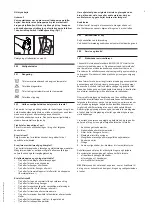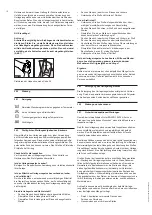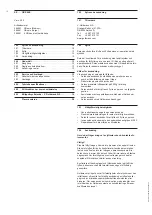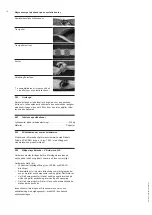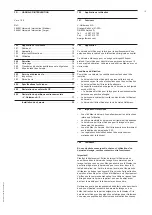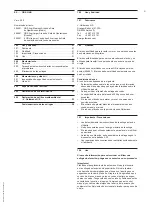
7
©
Guldmann
08/2018
# 9006
50_2
©
Guldmann
08/2018
# 9006
50_2
be made by staff that perform the periodic inspections. If written
inspection records are maintained, they should always reference
the unique sling identification number, and be updated to record
the condition of the sling. Not intended to represent all potential
inspection steps or all potential aspects of product management
program. Judgment of inspector/site prevails.
Sling inspection technique
The sling inspection procedure should be thorough, systematic
and consistent; both visual and “hands on” inspection techniques
are recommended. Certain forms of damage are far more discern
-
able through hands-on inspection, than by visual inspection. For
example, fabric stiffness, crushed webbing, as well as, thinning
fabric can be identified through tactile inspection. Visual inspec
-
tion alone may not reveal all forms of sling damage. Once signs
of damage have been identified, do not downgrade the work
load limit of the sling, with the intent of continuing to use it, but at
limited capacity or frequency. This is sometimes done to get more
service life out of a damaged sling. The operating rule and stand-
ard should be: intact = use; damage = do not use.
Consider the practice of documenting sling inspections through
written inspection records. The documentation should include
information such as: the name of manufacturer, the sling stock
number, width and length, the unique sling identification number
(important in differentiating similar slings), as well as the condition
of the sling. Other important information might also include the
date it was received or put into use at your facility and any special
features (if applicable). A beneficial outcome of an inspection pro
-
gram would be the realization of repetitive forms of damage and
the analysis that would lead to specific recommendations.
Sample visual examples of synthetic sling damage
x
)
Chemical/caustic burns
Broken stitching
Crushed / Frayed webbing
Knots
Melting / Charring
x
) sample visual images not intended to
represent all types of potential damage
3 .02 Lifetime
The life of the sling is individual and depends on how it is used,
washed etc. Before use the sling must be examined according to
description in section 2.02 and if it does not meet the inspection
requirements, it must be discarded if necessary.
4.00 Technical specifications
Lifting capacity, SWL
. . . . . . . . . . . . . . . . . . . . . . . 255 kg (560 lbs)
Material . . . . . . . . . . . . . . . . . . . . . . . . . . . . . . . . . . . . . .
Polyester
5 .00 EC-Declaration of conformity
The product is manufactured in compliance with the Council
Directive 93/42/EEC of June 14th 1993, including amendments,
as medical device class 1.
6 .00 Environmental policy statement – V . Guldmann A/S
Guldmann is continuously working towards ensuring that the com
-
pany’s impact on the environment, locally and globally, is reduced
to a minimum.
It is Guldmann’s goal to:
•
Comply with the current environmental legislation (e.g. WEEE
and REACH directives)
•
Ensure that we, at the widest possible range, use RoHS com
-
pliant materials and components
•
Ensure that our products do not have an unnecessary nega
-
tive impact on the environment regarding use, recirculation or
disposal
• Ensure that our products contribute to a positive working
environment in the places they are utilised
Inspections are made annually by the Department for Nature and
Environment from the Municipality of Aarhus using the Danish
Environmental Protection Act, section 42 as a reference.
Summary of Contents for 284801
Page 27: ...27 Guldmann 08 2018 900650_2 ...
Page 35: ......



